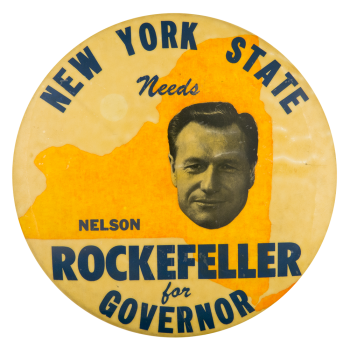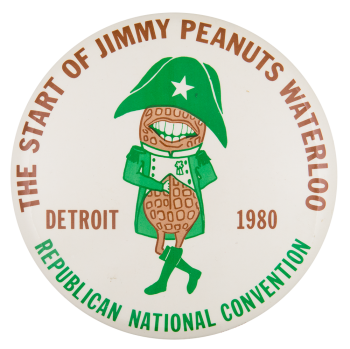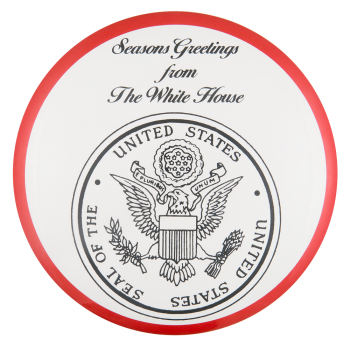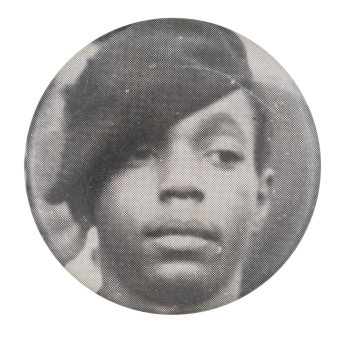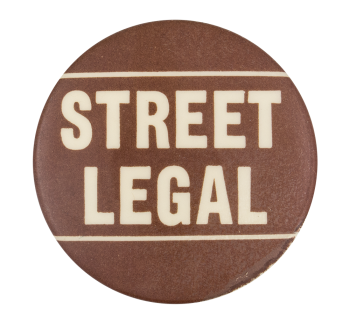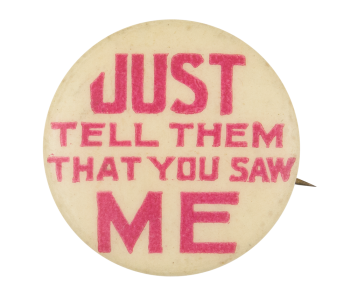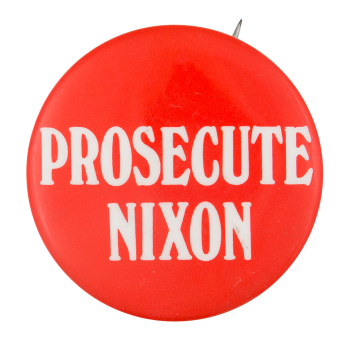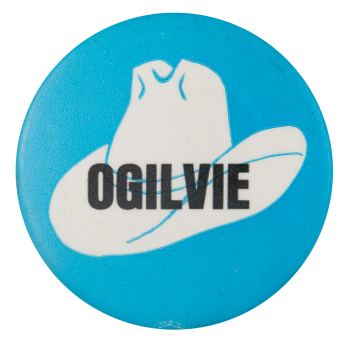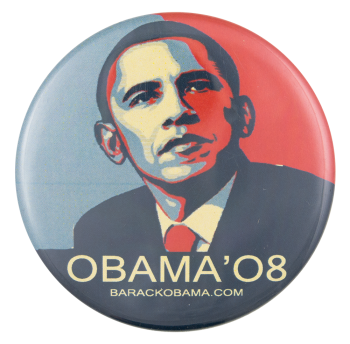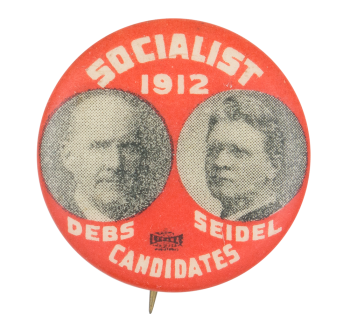New York State Needs Nelson Rockefeller
| Category | |
|---|---|
| Additional Images | |
| Sub Categories | |
| Text on Button | NEW YORK STATE Needs NELSON ROCKEFELLER for GOVERNOR |
| Image Description | Photograph of Nelson Rockefeller's head superimposed over a yellow illustrated silhouette of the state of New York. Blue text on a light yellow background. |
| Back Paper / Back Info |
Product of Emress Specialty Co. |
| Curl Text | (union bug) 9 |
| Back Style | |
| The Shape | |
| The Size | |
| The Manufacturer | |
| Additional Information | Nelson Rockefeller served as the 49th Governor of New York from 1959-1973. His policies surrounding civil rights, the environment, and abortion rights put him to the left, politically, than most of his fellow Republican party members. The term “Rockefeller Republicans” was quickly coined to describe the sect of Republicans that resonated with more liberal views. Some of his chief accomplishments are increasing the number of minorities and women in state government by 50%, the establishment of 55 new state parks, and the construction and expansion of over 22,000 miles of highway throughout the state. However, his war on crime led to the implementation of controversial police policies such as ‘Stop and Frisk’ which gave police the rights to temporarily detain, question, and search for contraband any individual deemed suspect. In 1974, Rockefeller would go on to serve as Gerald Ford’s Vice President and then in 1979 succumbed to a heart attack and passed away in his home. |
| Catalog ID | PO0695 |

